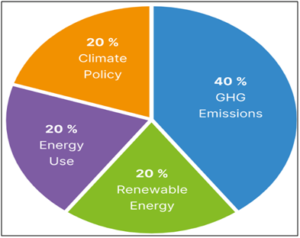Archives
(PRELIMS Focus)
Category: Defence and Security
Context:
- Infrastructure major Larsen & Toubro Ltd. (L&T) and BAE Systems have bagged a contract from the Indian Army for supply of BvS10 Sindhu.

About BvS10 Sindhu:
- Nature: The BvS10 is a well-known articulated all-terrain vehicle.
- Used by several advanced militaries: The BvS10 is already in service with the armed forces of Austria, France, the Netherlands, Sweden, Ukraine, and the United Kingdom. It’s also on order for the German Army and has been selected for the US Army’s Cold Weather All-Terrain Vehicle (CATV) program.
- Structure: BvS10 Sindhu is an upgraded variant of the BvS10 with adaptations tailored specifically for India’s terrain and climate. Its design allows for two connected vehicle sections that help it cross difficult terrain that conventional wheeled or tracked vehicles struggle with.
- Customised for Indian conditions: It’s customized for India’s extreme terrain: high-altitude regions, deserts, marshlands, and flood-prone zones. The vehicle is also amphibious, able to operate in water or flooded terrain.
- Construction: L&T will manufacture the BvS10 Sindhu at its Armoured Systems Complex in Hazira, Gujarat, with technical and design support from BAE Systems Hägglunds (a Swedish business unit of BAE Systems, focused on military ground vehicles), the original manufacturer of the BvS10 platform.
- Uses: The Sindhu variant can be reconfigured for multiple purposes: troop transport, command post, ambulance, recovery, logistics, or even a weapons-armed version. This flexibility is ideal for the Indian Army’s diverse mission needs.
- Boost to Make in India: It will support India’s defence modernisation, which embodies the commitment to local manufacturing and technology transfer under the Make in India initiative.
Source:
Category: Environment and Ecology
Context:
- India slipped 13 ranks to figure at the 23rd position in the latest Climate Change Performance Index (CCPI).

About Climate Change Performance Index (CCPI):
- Publishing agency: It is published by think tanks German watch, New Climate Institute, and Climate Action Network International. It was first published in 2005.
- Objective: It tracks the progress of the world’s largest emitters in terms of emissions, renewables, and climate policy.
- Assessment in 4 categories: The performance of countries is assessed in four categories with 14 indicators- Greenhouse Gas Emissions (40% of the overall score), Renewable Energy (20%), Energy Use (20%), and Climate Policy (20%).
- Key highlights of the Climate Change Performance Index 2026:
- Denmark, the UK and Morocco took the lead in this year’s CCPI.
- China (54th), Russia (64th), the US (65th) and Saudi Arabia (67th) are the G20’s worst-performing countries, receiving an overall very low score.
- India fell 13 places from its previous ranking of 10th to stand at 23rd in the latest global climate change performance with a score of 61.31.
- It’s the biggest fall of India on the CCPI ranking in the recent past even as it remained in the top 10 high-performing countries for six years in a row till 2024. India, which ranked 31st in 2014, entered the top 10 list for the first time in 2019.
- It also labelled India among the biggest producers of oil, gas, and coal worldwide, leading it to fall from a ‘high performer’ to a ‘medium’ one in this year’s CCPI.
Source:
Category: Miscellaneous
Context:
- Recently, the Indira Gandhi Prize for Peace, Disarmament and Development for 2024 was presented to Michelle Bachelet, the first and only woman President of Chile.

About Indira Gandhi Peace Prize:
- Establishment: It was instituted in the memory of the former Prime Minister Indira Gandhi by a trust in her name in 1986.
- Nomenclature: It is also known as the Indira Gandhi Prize for Peace, Disarmament, and Development,
- Composition: It consists of a monetary award of 25 lakh rupees along with a citation.
- Significance: The prize is awarded annually and is considered one of the highest honours in the field of peace and development.
- Eligibility criteria: It is awarded annually to a person or organization without any distinction of nationality, race or religion, in recognition of creative efforts towards:
- Promoting international peace and disarmament, racial equality, and goodwill and harmony among nations;
- Securing economic co-operation and promoting a new international economic order;
- Accelerating the all-round advancement of developing nations;
- Ensuring that the discoveries of science and modern knowledge are used for the larger good of the human race; and
- Enlarging the scope of freedom and enriching the human spirit.
Source:
Category: Polity and Governance
Context:
- Union Coal Minister will inaugurate GSI’s international seminar in Jaipur as part of its year-long commemoration of 175 years of service to the nation.

About Geological Survey of India (GSI):
- Origin: It was conceived as “Geological Survey of India” by John McClelland who initiated the appointment of David Hiraw Williams as the Geological Surveyor on February 5, 1846 by the East India Company.
- Formal establishment: The appointment of Thomas Oldham as the new Geological Surveyor in 1851 marked the formal beginning of the functioning of the GSI.
- Objective: It aims to provide impartial and up-to-date geological expertise and geoscientific information of all kinds, with a focus on policy-making decisions, and commercial and socio-economic needs.
- Nodal Ministry: Presently, GSI is an attached office to the Ministry of Mines.
- Headquarter: Its headquarters is located in Kolkata and has six regional offices located at Lucknow, Jaipur, Nagpur, Hyderabad, Shillong and Kolkata.
- Uniqueness: It is the second oldest survey body in India after Survey of India (founded in 1767).
- Documentation of geological processes: It also emphasises systematic documentation of all geological processes, both surface and subsurface, of India and its offshore areas. The organisation carries out this work through geological, geophysical, & geochemical surveys using the latest and most cost-effective techniques and methodologies.
- Significance: It has played a pioneering role in geological mapping, mineral exploration, disaster studies, and geoscientific research, significantly contributing to India’s industrial and economic growth
- Missions: It carries out all activities under five Missions.
- Mission-I (Ground, Aerial and Marine Surveys),
- Mission-II (Natural Resource Assessments & Augmentation of Minerals, Coal & Lignite),
- Mission-III (Information and dissemination),
- Mission- IV (Fundamental and Multi-disciplinary Geoscience Research) and
- Mission-V (Training and Capacity Building).
Source:
Category: Government Schemes
Context:
- Recently, Union Minister of Commerce and Industry launched the Trade Intelligence & Analytics (TIA) Portal in New Delhi.

About Trade Intelligence and Analytics (TIA) Portal:
- Nature: It is a one-stop trade intelligence and analytics platform that integrates multiple global and national databases.
- Development: It is developed by the Department of Commerce, Minister of Commerce and Industry.
- Objective: The portal aims to make trade data more transparent, accessible, and useful for stakeholders across India. It seeks to help importers, exporters, MSMEs, and startups make informed and data-driven decisions.
- Significance: The new and more exhaustive capabilities of the TIA Portal significantly improve accessibility and usability of trade data at one place.
- Centralised digital hub: It serves as a centralized digital hub that consolidates diverse trade databases—both global and bilateral—into a single integrated system. It is designed to enhance trade analytics and foster data-driven evidence-based policymaking through a comprehensive and integrated platform.
- Real time insights: It offers more than 270 interactive visualisations across over 28 dashboards. It provides real-time, interactive insights on India and global trade, commodities and sectoral analytics, market intelligence.
- Includes PLI sectors: It also includes automated trade reports and tracking of trade trends for the production-linked incentive (PLI) sectors and critical minerals. It also provides tools to compare and contrast macroeconomic, trade and investment indicators across countries.
- Trade indices: It incorporates trade indices such as
- Trade Complementarity Index: It assesses alignment between India’s export profile and partner countries’ import needs.
- Revealed Comparative Advantage index: It highlights products where India holds a competitive edge.
- Trade Intensity Index: It measures the strength of bilateral trade relationships relative to global flows.
Source:
(MAINS Focus)
(UPSC GS Paper III – “Inclusive growth and issues arising from it; Government policies and interventions for development in various sectors”)
Context (Introduction)
The four labour codes—Wages, Industrial Relations, Social Security, and Occupational Safety—have come into force, replacing 29 laws. They aim to simplify compliance, expand social security, formalise employment, and reshape India’s labour market amid mixed reactions from firms and unions.
Main Arguments / Key Features
Code on Wages, 2019
- Merges laws on minimum wages, wage payment, bonus and remuneration.
- “Wages” now must constitute ≥50% of total remuneration; boosts PF/ESIC contributions, enhancing post-retirement benefits.
- Centre can set a national floor wage; states cannot go below it.
- Mandatory appointment letters strengthen formalisation; aligns with ILO recommendations.
Industrial Relations Code, 2020
- Firms with up to 299 workers can retrench without government approval (earlier 100), increasing flexibility and possibly boosting manufacturing competitiveness.
- Mandatory 14-day strike notice across all industries curbs flash strikes.
- Promotes ease of doing business by rationalising dispute resolution and enabling fixed-term employment.
Social Security Code, 2020
- For the first time brings gig/platform workers and aggregators within legal social security.
- Aggregators to contribute 1–2% of turnover for worker welfare.
- FTEs eligible for gratuity after one year (earlier five).
- Expands benefits such as PF, ESIC, maternity benefits; aligns with NITI Aayog’s gig workforce projections (23.5 million by 2030).
Occupational Safety, Health & Working Conditions Code, 2020
- Consolidates 13+ laws on workplace safety, migrant labour and contract labour.
- Allows women to work night shifts with consent and mandatory safety protections (transport, CCTV, security).
- Weekly cap of 48 hours; overtime at double wages.
- Covers audiovisual and digital media workers, plantation workers, and beedi/cigar workers.
Criticisms / Drawbacks
- Job security concerns: Raising the retrenchment threshold may increase precarious employment and limit workers’ ability to negotiate.
- Union rights diluted: Mandatory strike notice, tighter union registration rules and expanded powers of registrars may reduce effective collective bargaining.
- MSME compliance burden: Higher PF/ESIC contributions raise cost pressures for small and unorganised firms, risking informalisation.
- Centralisation concerns: A nationwide floor wage may constrain states with diverse living standards.
- Weak implementation capacity: Labour being a concurrent subject, state-level readiness varies significantly—impacting consistency and enforcement.
- Trade union criticism: The codes are viewed as “negating rights secured over 150 years” and weakening democratic labour institutions
Reforms & Way Forward
- Balance flexibility with protection: Introduce sector-specific retrenchment thresholds, strengthen severance norms and promote “flexicurity” models combining flexibility with robust social security.
- Strengthen social security delivery: Operationalise gig/platform welfare funds with real-time digital tracking. Integrate e-Shram with PF/ESIC for portability of benefits, especially for migrant workers.
- Improve implementation capacity: Expand inspectorate infrastructure, deploy digital inspection systems and multilingual worker awareness campaigns. Offer phased compliance and financial support for MSMEs.
- Enhance collective bargaining: Ensure transparent and predictable union registration rules and revive tripartite consultations as recommended by ILO.
- Clarify provisions and reduce litigation: Provide detailed rules on aggregator contributions, FTE benefits and wage components to ensure interpretational clarity and uniform adoption.
Conclusion
The labour codes represent a significant consolidation of India’s labour laws aimed at improving formalisation, social security and ease of doing business. However, fears of weakened labour rights, uneven state capacity and increased precarity must be addressed through calibrated reforms, strong enforcement frameworks and genuine social dialogue to ensure inclusive and equitable labour governance.
Mains Question
- “The new labour codes aim to modernise India’s labour market through simplification and expanded social security. Critically analyse their implications for workers’ rights, job security and inclusive growth.” (250 words, 15 marks)
Source: Firstpost
(UPSC GS Paper IV – “Role of family, society and educational institutions in inculcating values”; “Emotional intelligence—concepts and applications”; “Human values and attitudes”)
Context (Introduction)
The recent suicide of a school student highlights a deep emotional crisis among children who struggle with anxiety, bullying, and unexpressed distress. The incident calls for urgent societal introspection, stronger emotional safety systems, and value-based educational reform.
Main Arguments
- Emotional burdens of children often go unseen: Children today carry invisible emotional loads—fear of failure, pressure to meet parental expectations, anxiety from bullying, and inability to articulate feelings. Their apologies — “Sorry for breaking your heart… sorry I couldn’t live up to expectations” — reflect internalised guilt and emotional overwhelm. This indicates gaps in empathy, listening, and adult awareness.
- Priorities remain skewed: Sensation over compassion: Each tragedy generates media noise but little structural reform. The society responds with sensationalism rather than understanding, while schools continue prioritising academic performance and discipline over emotional well-being and pastoral care. This contradicts the constitutional vision of holistic education (Art. 45) and NEP-2020 emphasis on socio-emotional learning.
- Absence of a national child safety & wellness framework: India lacks uniform protocols on mental health emergencies, grievance redressal, or preventive counselling. School counsellor ratios are extremely low — often 1 per 3,000 students (FICCI 2023). Without standardised frameworks, families and schools rely on ad-hoc responses rather than a preventive mental health system.
- Weak family–school partnerships: Evidence shows children thrive when families and schools work as co-educators. But communication gaps persist. Many parents focus on marks, while teachers prioritise compliance. Children thus occupy emotional spaces where they feel alienated, unheard, or afraid to seek help.
- Societal aspiration culture intensifies pressures: Children are products of societal values—competition, achievement, social comparison. In this environment, emotional distress becomes invisible. When society rewards marks over mental health, children internalise the belief that worth equals performance.
Criticisms / Drawbacks Highlighted
- Hyper-academic culture sidelines coping skills, resilience and emotional intelligence.
- Lack of trained counsellors limits early identification of distress.
- Silence at home: stigma around discussing emotions prevents help-seeking behaviour.
- Schools prioritise discipline over pastoral care, reducing trust between children and teachers.
- Societal apathy shifts blame rather than addressing collective responsibility.
- Adolescent neurobiology (impulsivity, emotional intensity) is misunderstood, leading adults to dismiss signs of distress.
- No systemic triggers monitoring, despite repeated evidence of school-based stress, bullying, and academic overload.
Reforms & Way Forward
- Build a national child safety & wellness framework: A unified structure with mandatory counsellors, crisis protocols, bullying prevention systems, and mental health audits—similar to UK’s “Whole School Wellbeing Framework”.
- Integrate social-emotional learning (SEL) into curriculum: NEP-2020 recommends SEL modules. Schools must institutionalise emotional intelligence, communication, empathy, conflict resolution, mindfulness, and coping skills.
- Strengthen family–school partnerships: Regular parent–teacher emotional check-ins; workshops on adolescent psychology; joint responsibility models; creating “circles of support” involving counsellors, teachers, and parents.
- Train teachers in pastoral care: Teachers should be equipped to recognise early warning signs—withdrawal, sudden irritability, falling grades, isolation. Teacher training institutions must include child psychology and counselling basics.
- Promote value-oriented upbringing: Family remains the first site of moral development. Active listening, non-judgmental communication, positive reinforcement, and shared emotional spaces build confidence and resilience.
- Reduce academic pressure and punitive discipline: Schools should replace punitive authority with restorative practices, peer support groups, and safe spaces for expression.
- National awareness campaigns: Public messaging that normalises emotional struggles, reduces stigma, and encourages help-seeking among children and parents.
Conclusion
Childhood should be a space of safety, expression and growth, not silent suffering. As a society, we must move beyond fault-finding towards compassion, empathy, and systemic reform. A child who feels seen, heard, valued and supported is far less likely to feel overwhelmed. Building emotionally responsive families, humane schools and supportive communities is not an option—it is an ethical duty.
Mains Question
- “Emotional intelligence and value-based socialisation are essential to child well-being. In light of recent incidents of student distress, examine the role of family, school and society in creating emotionally safe environments for children.” (250 words, 15 marks)
Source: Indian Express
